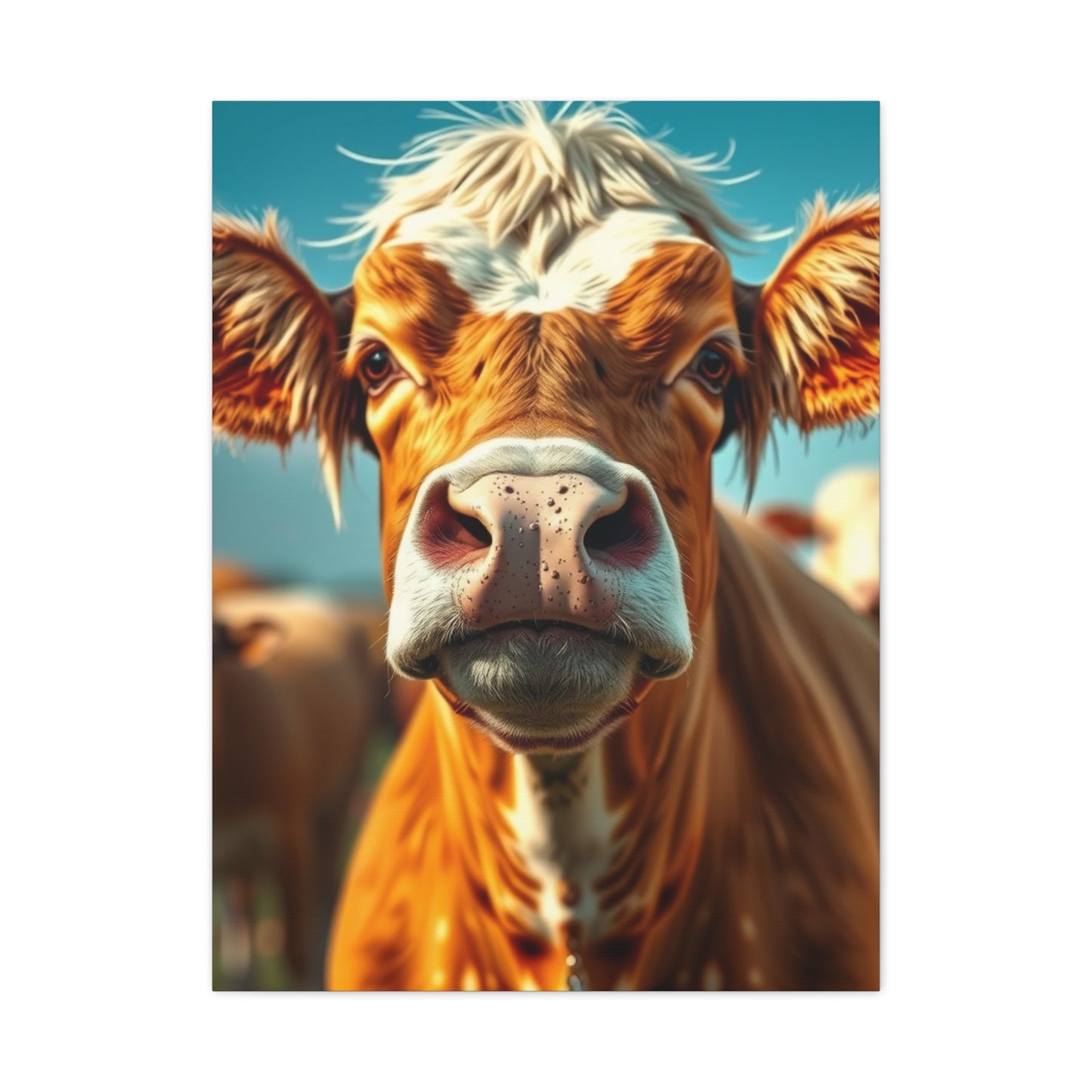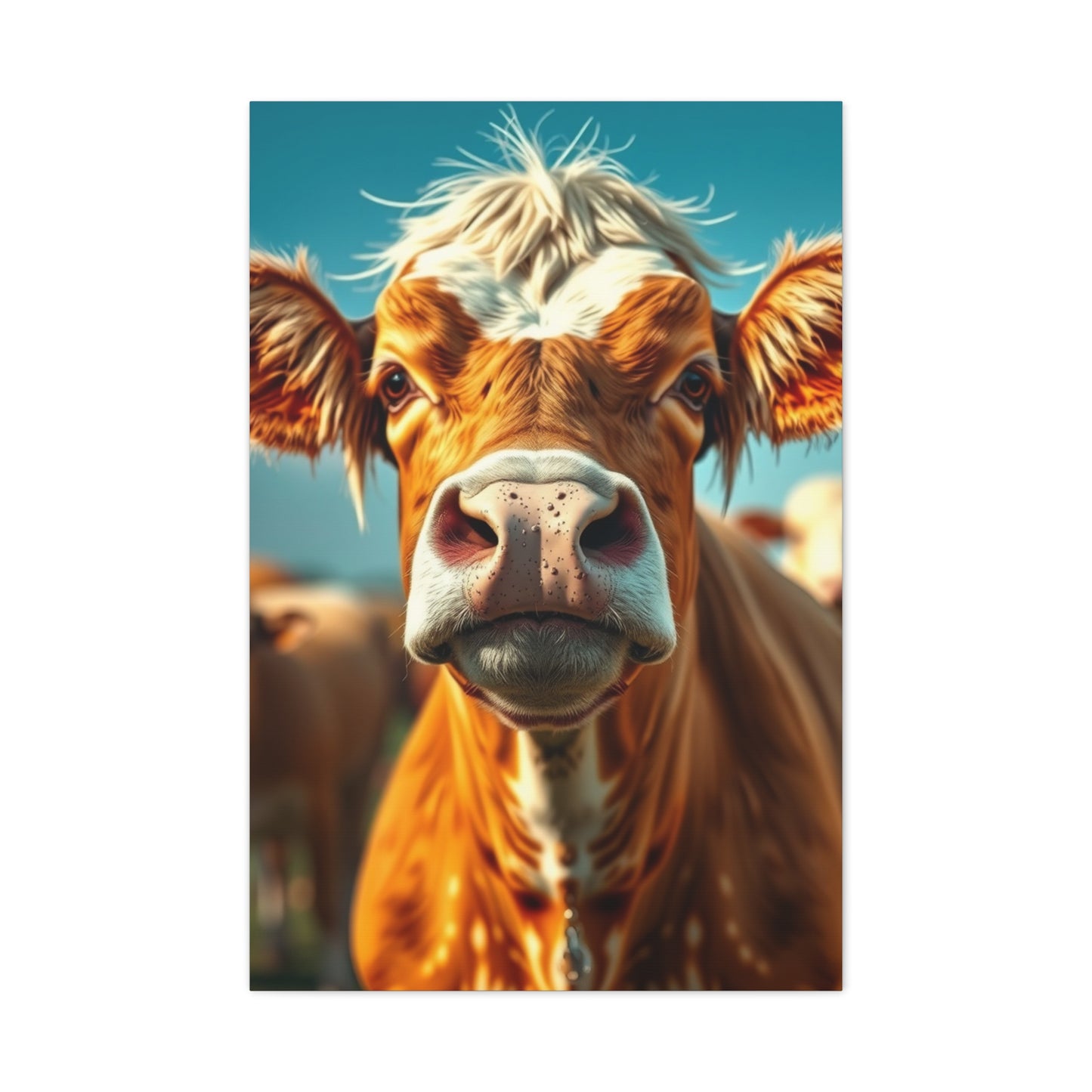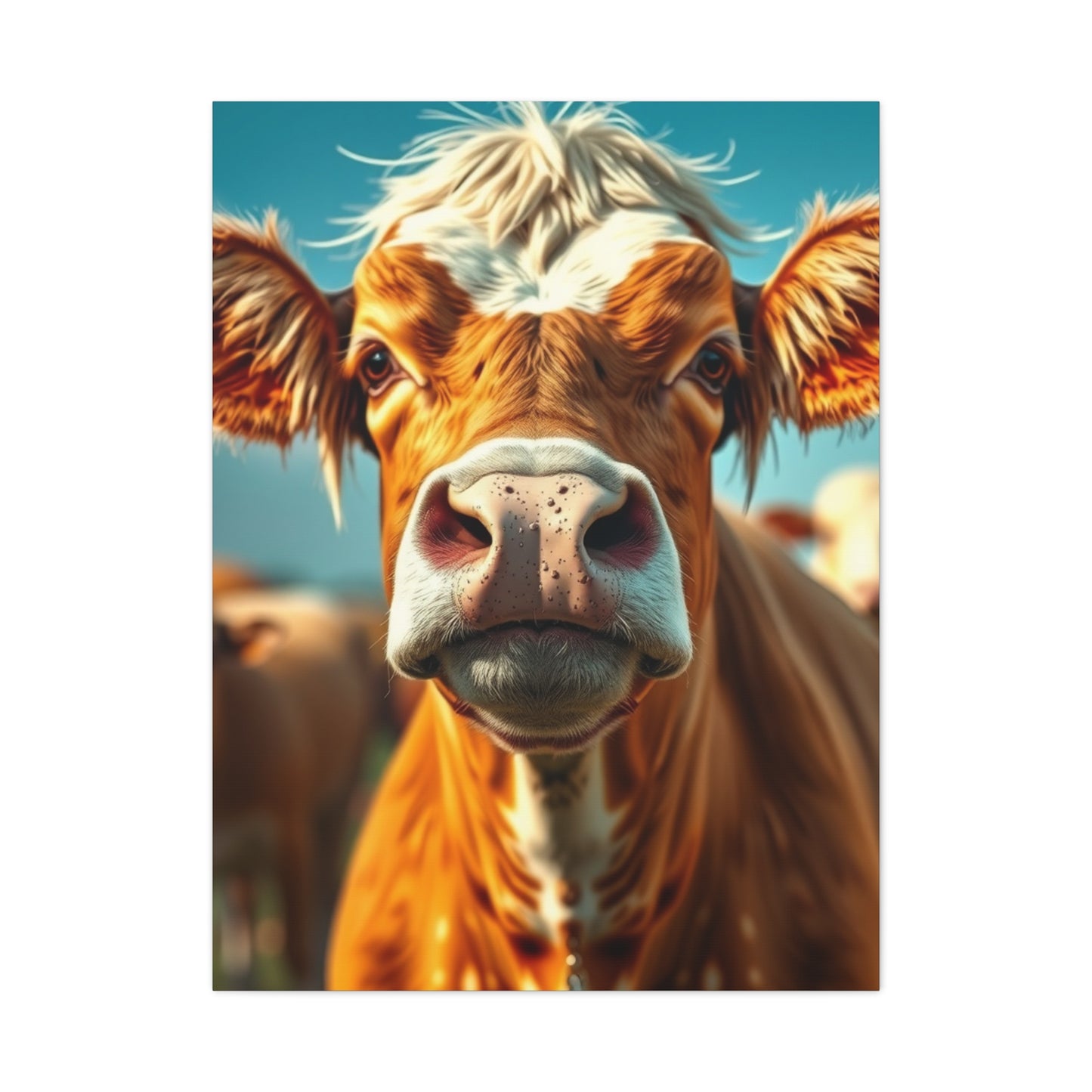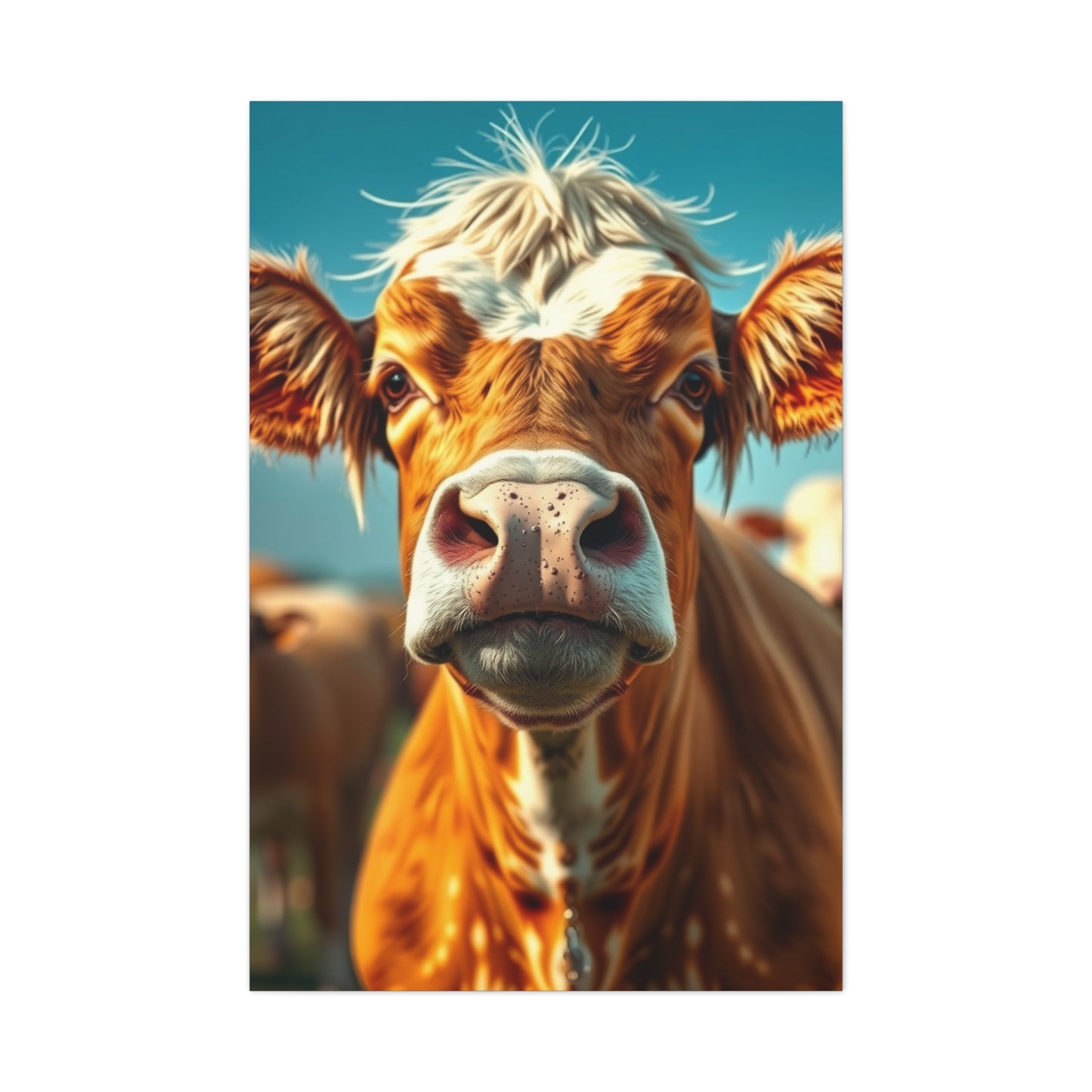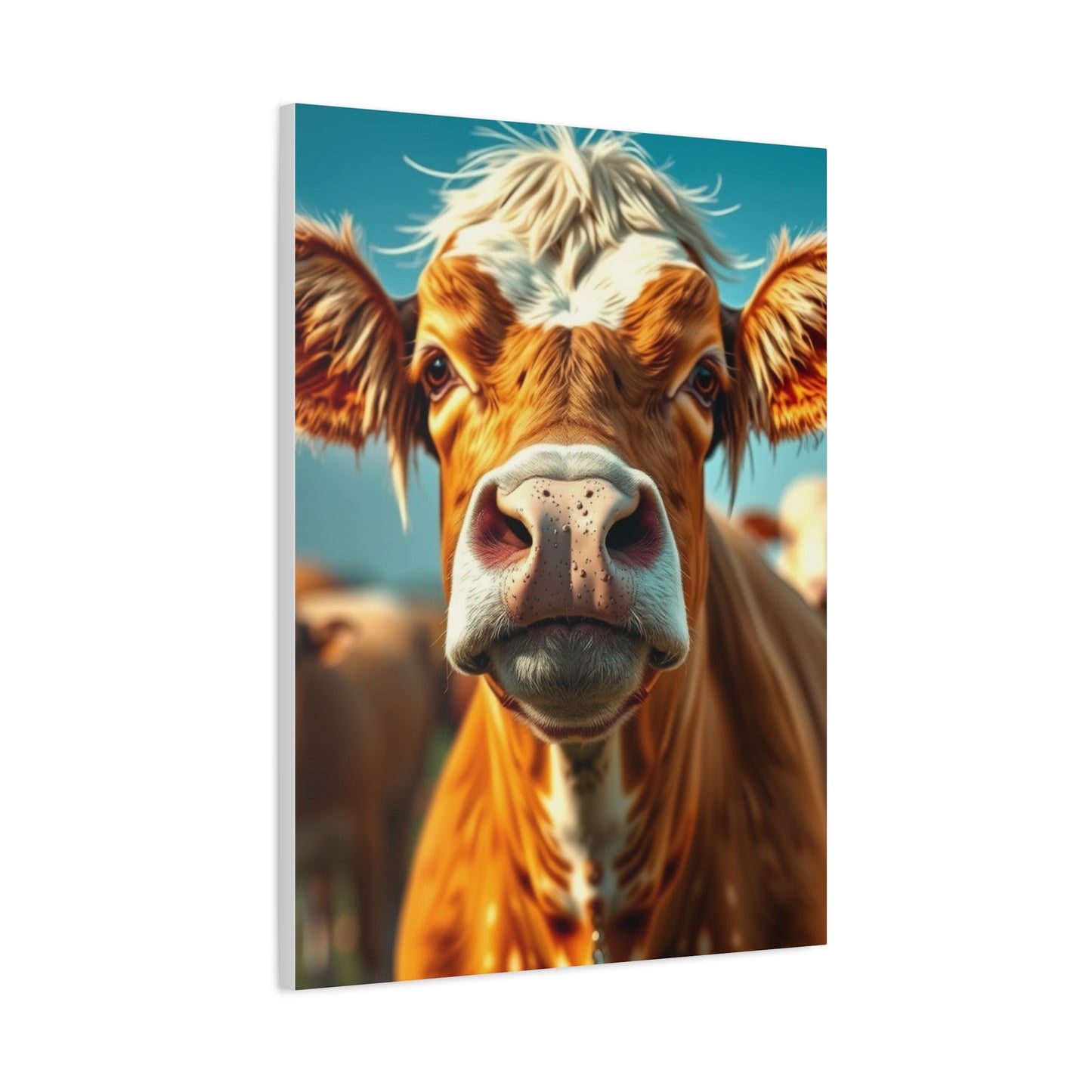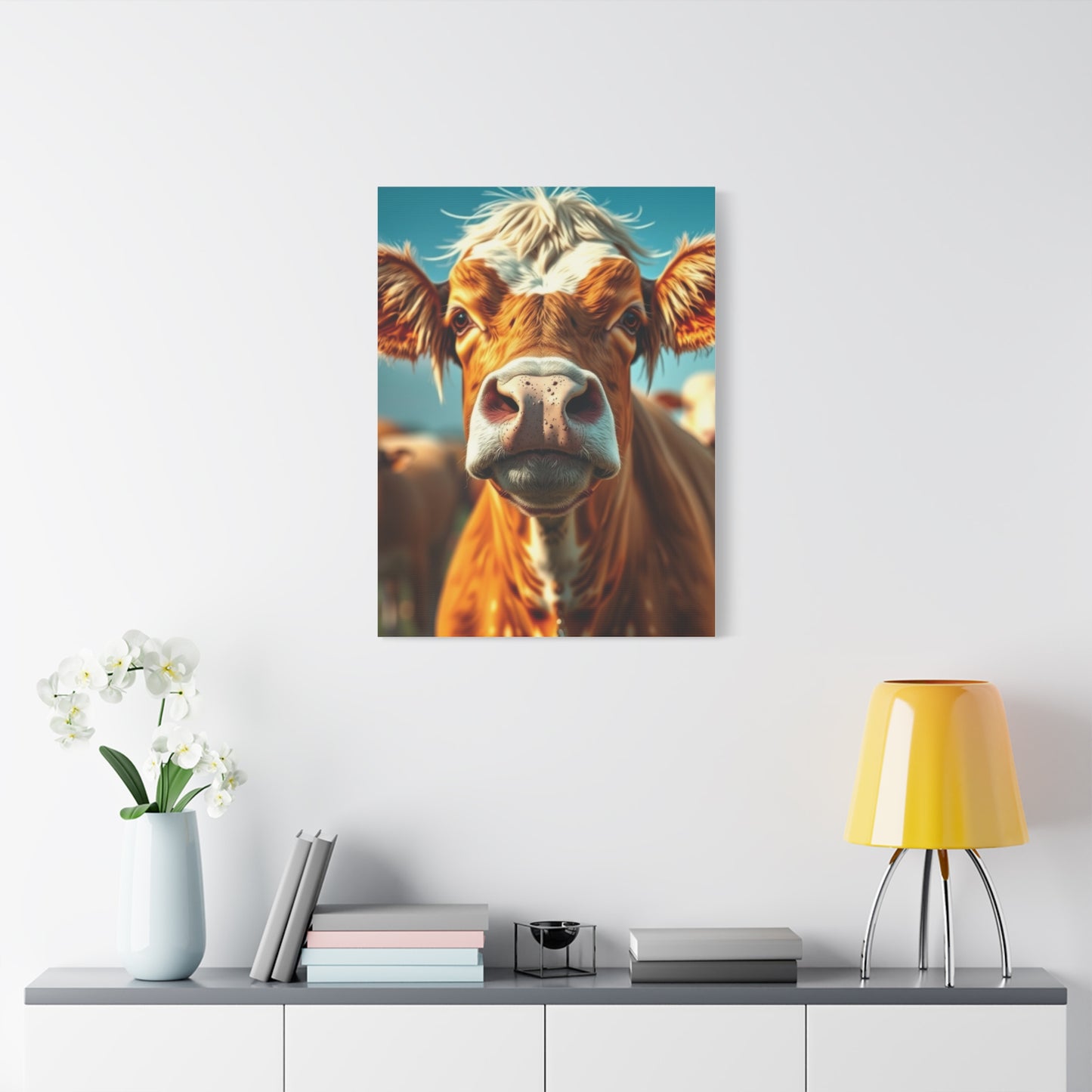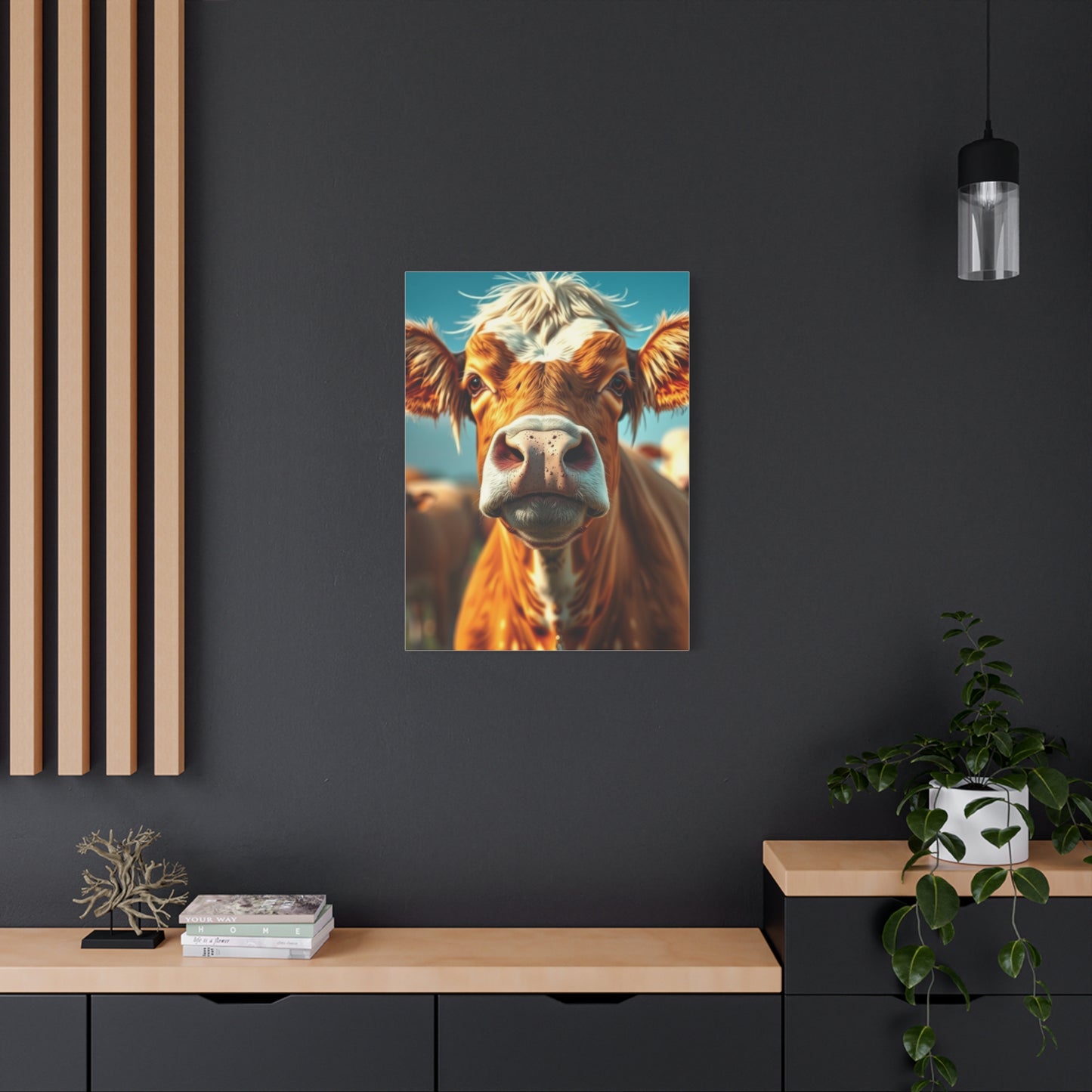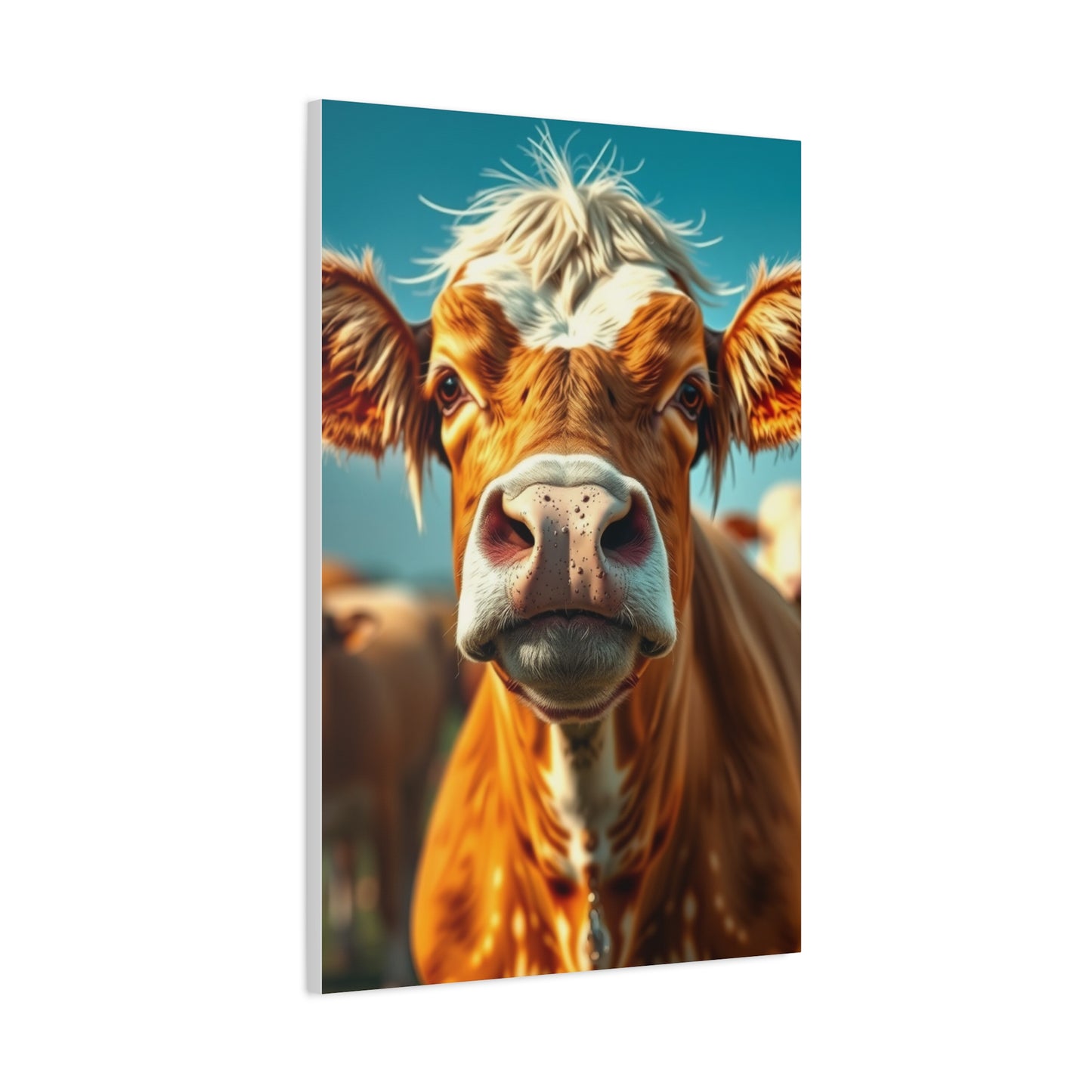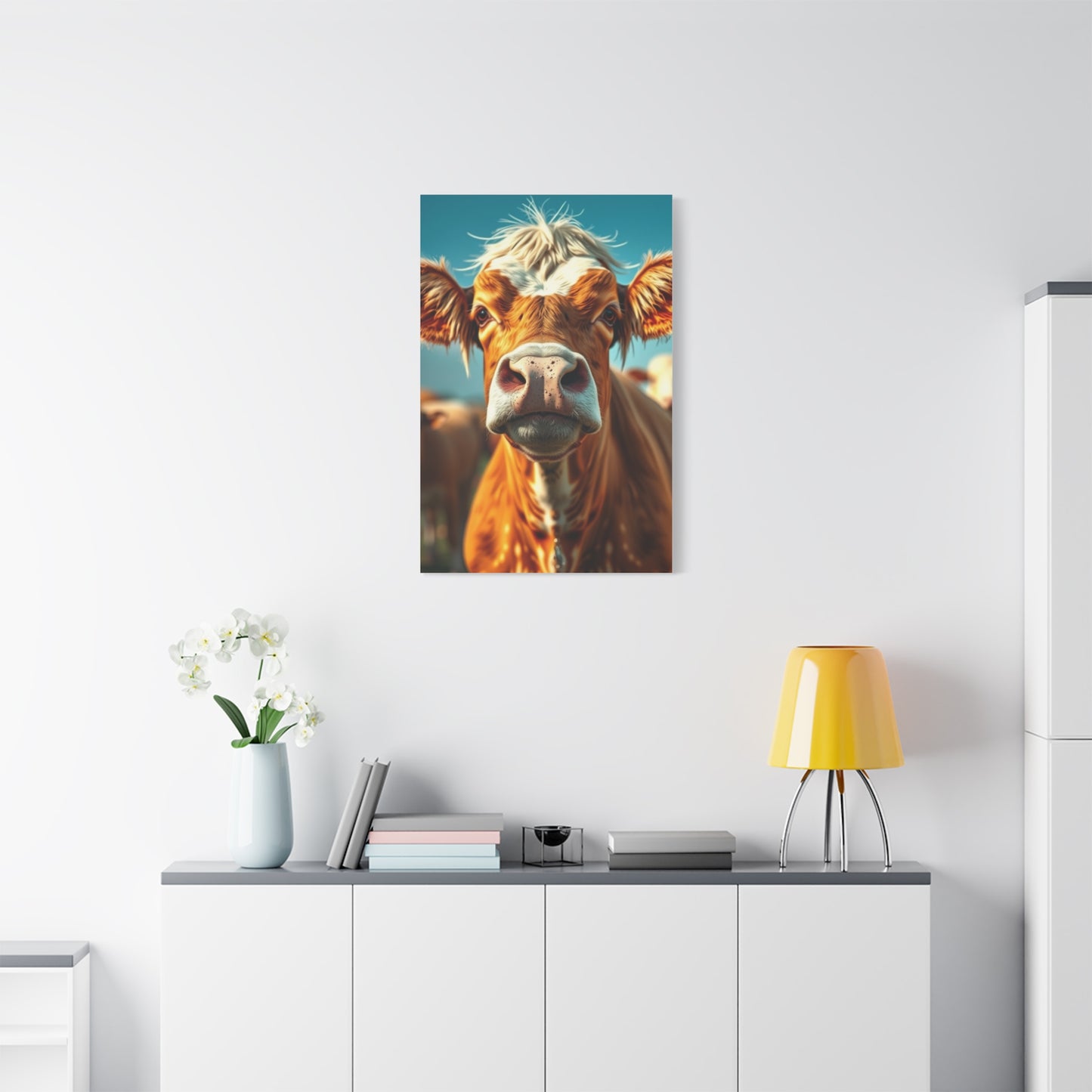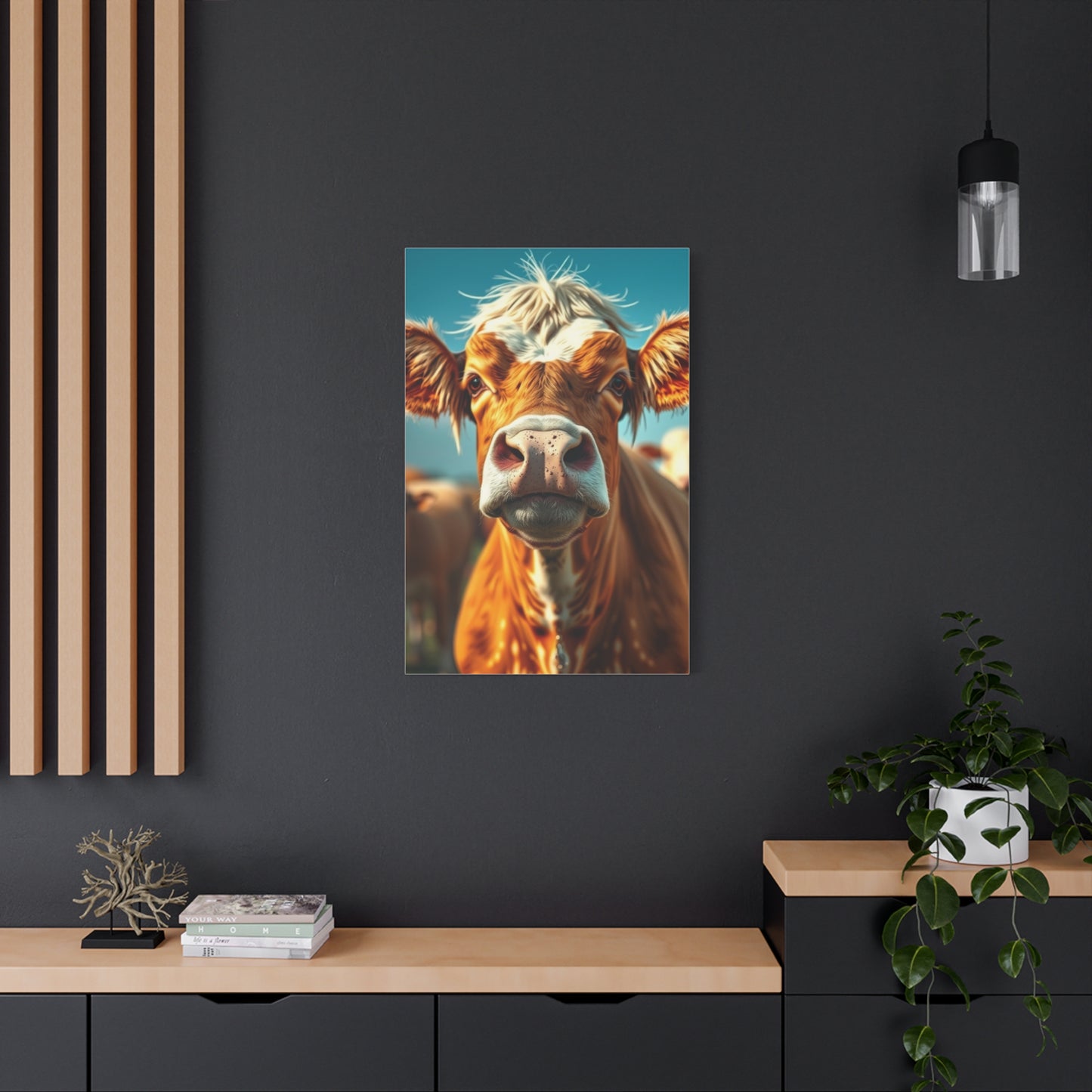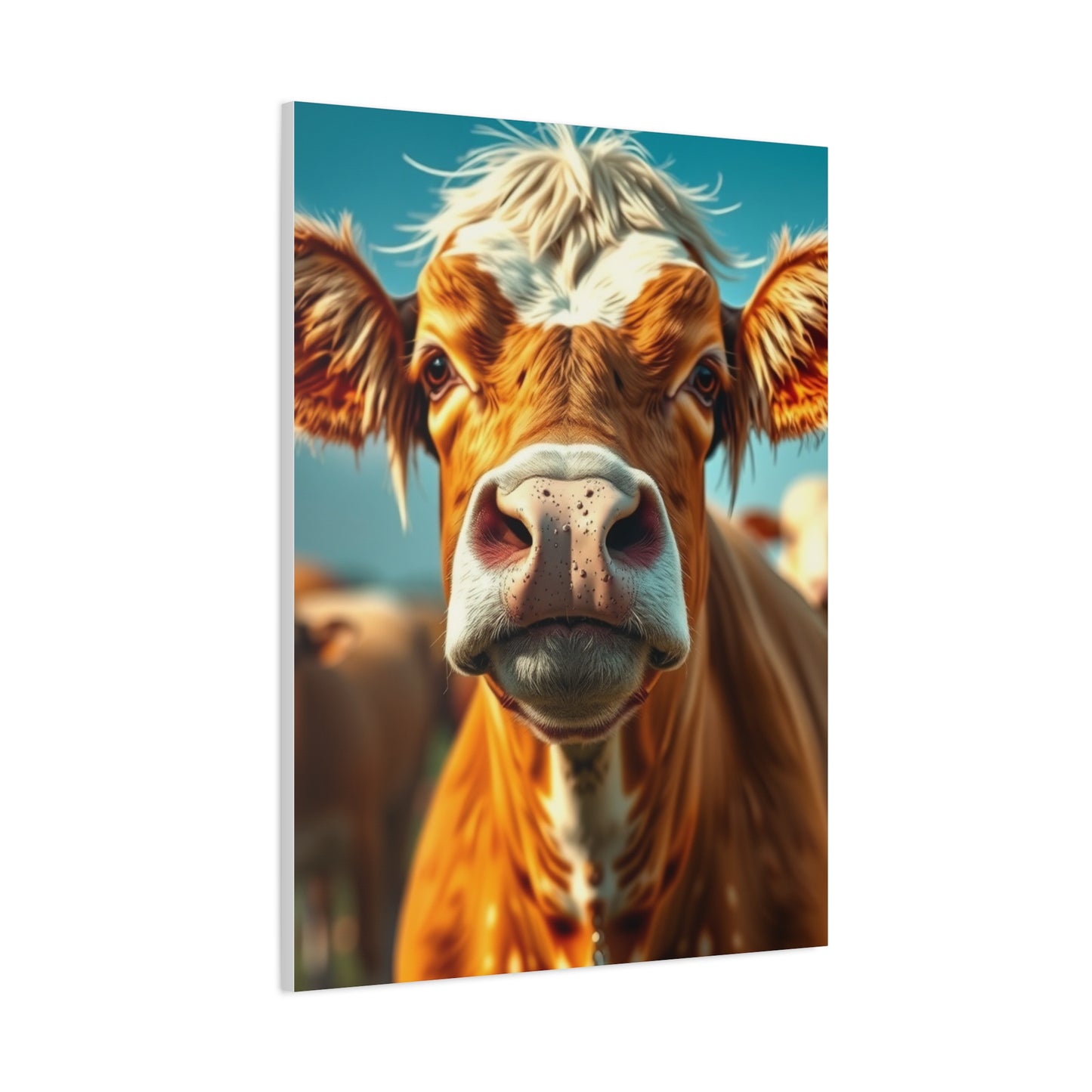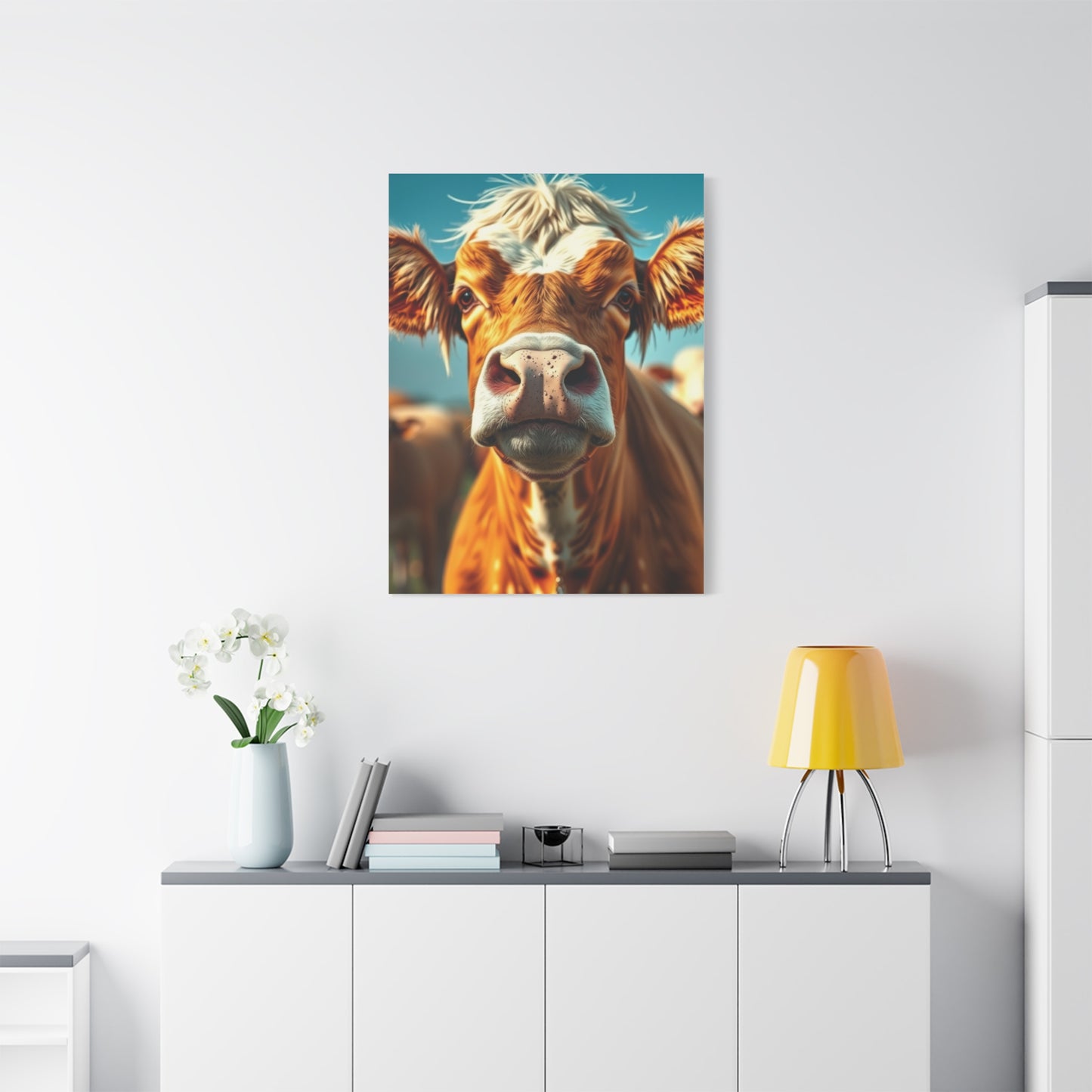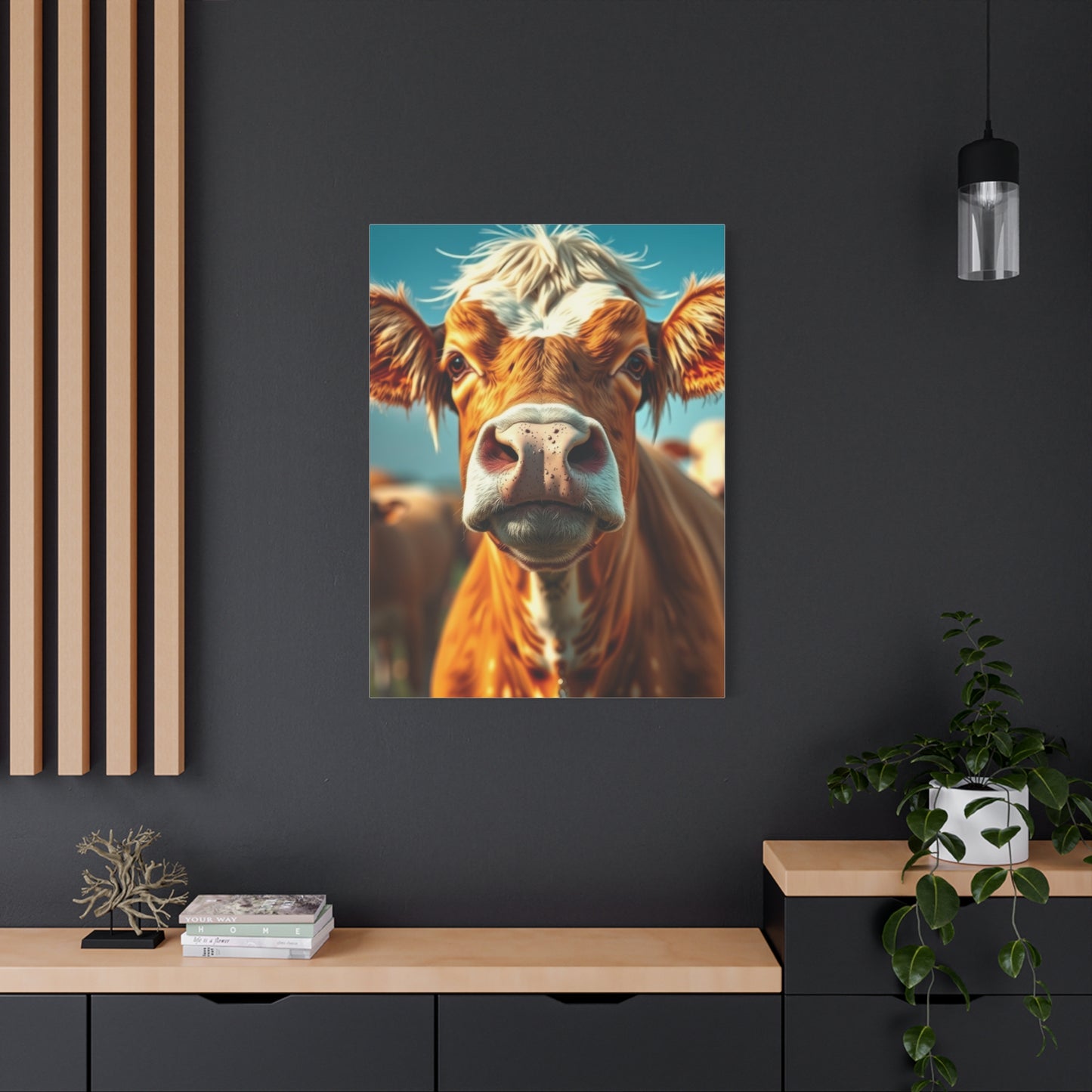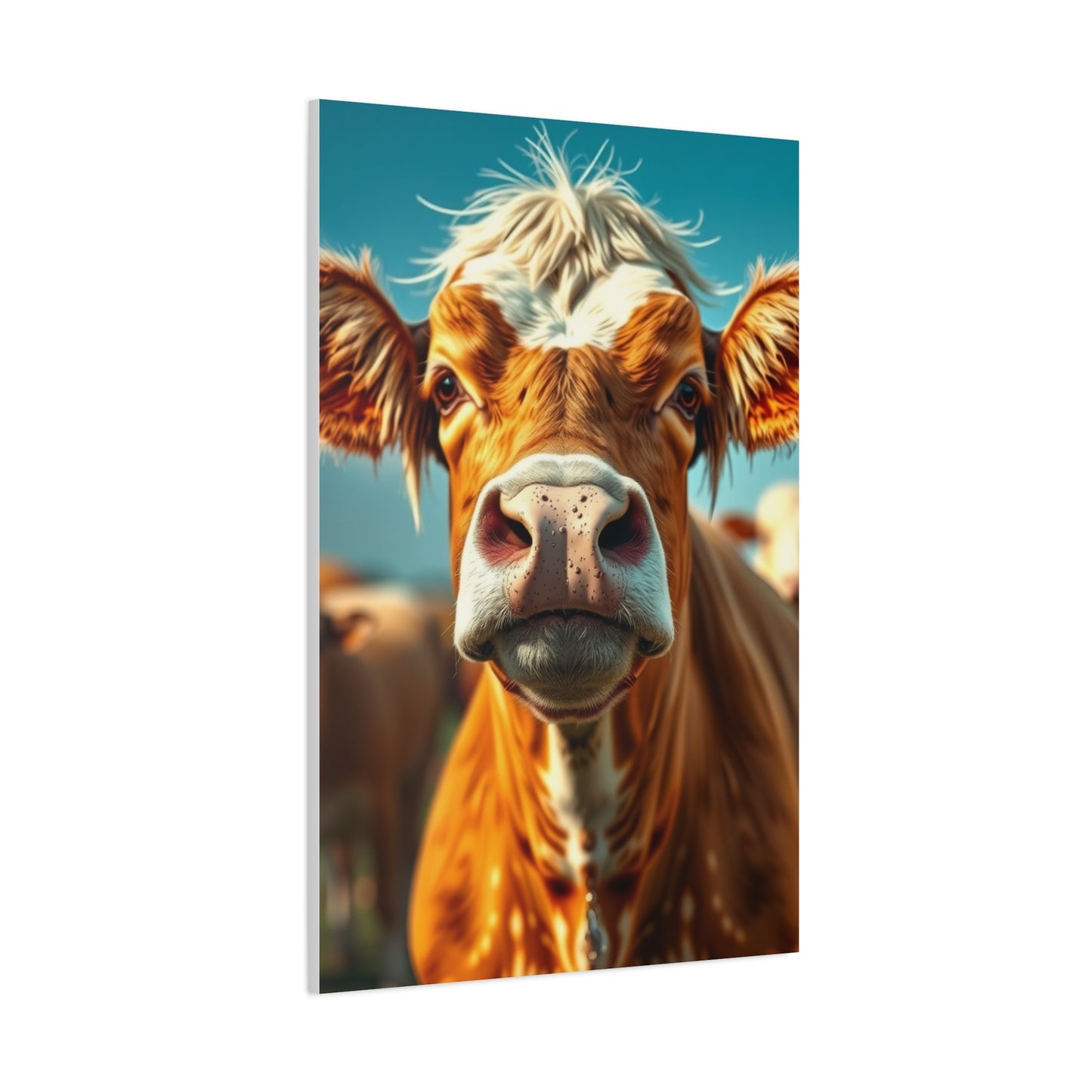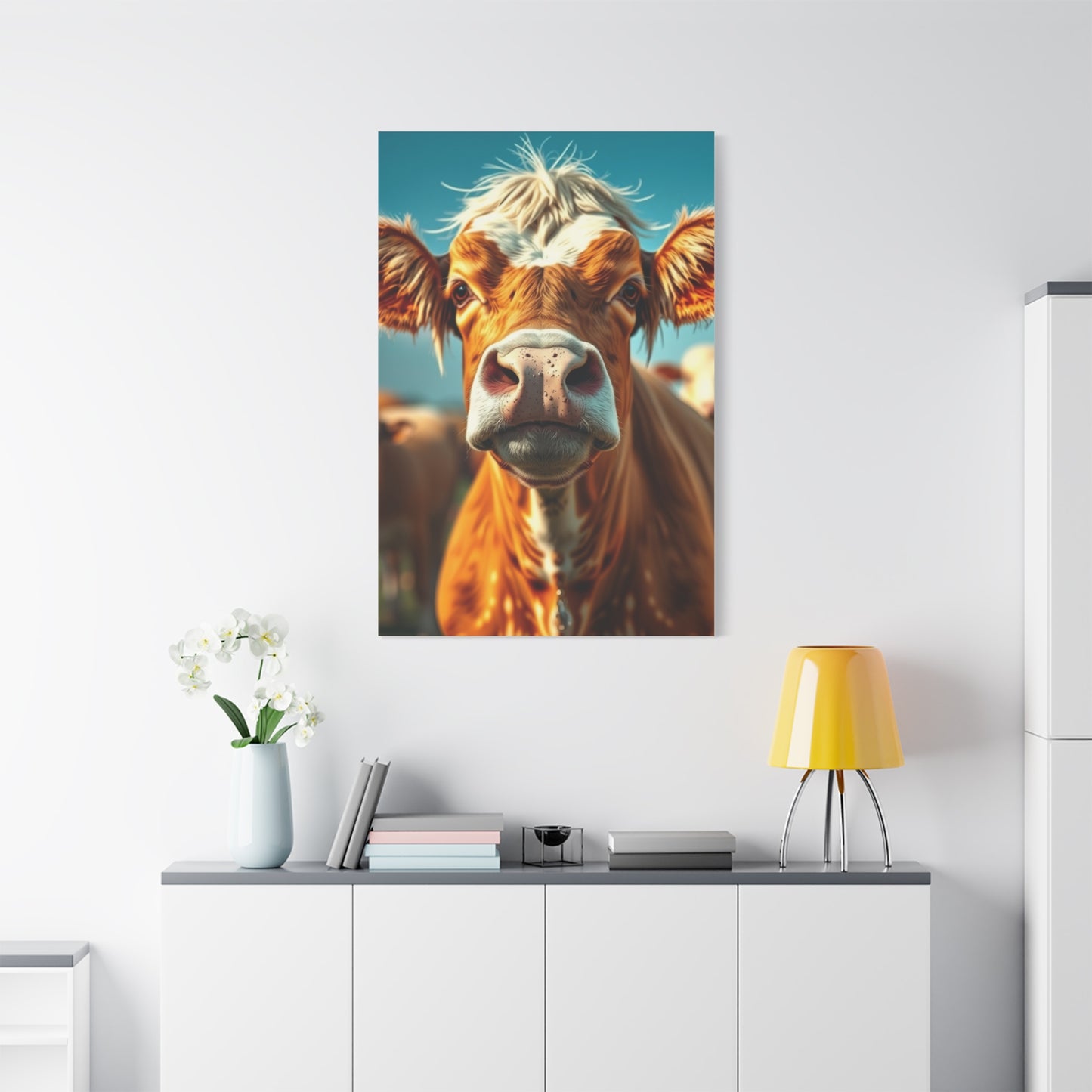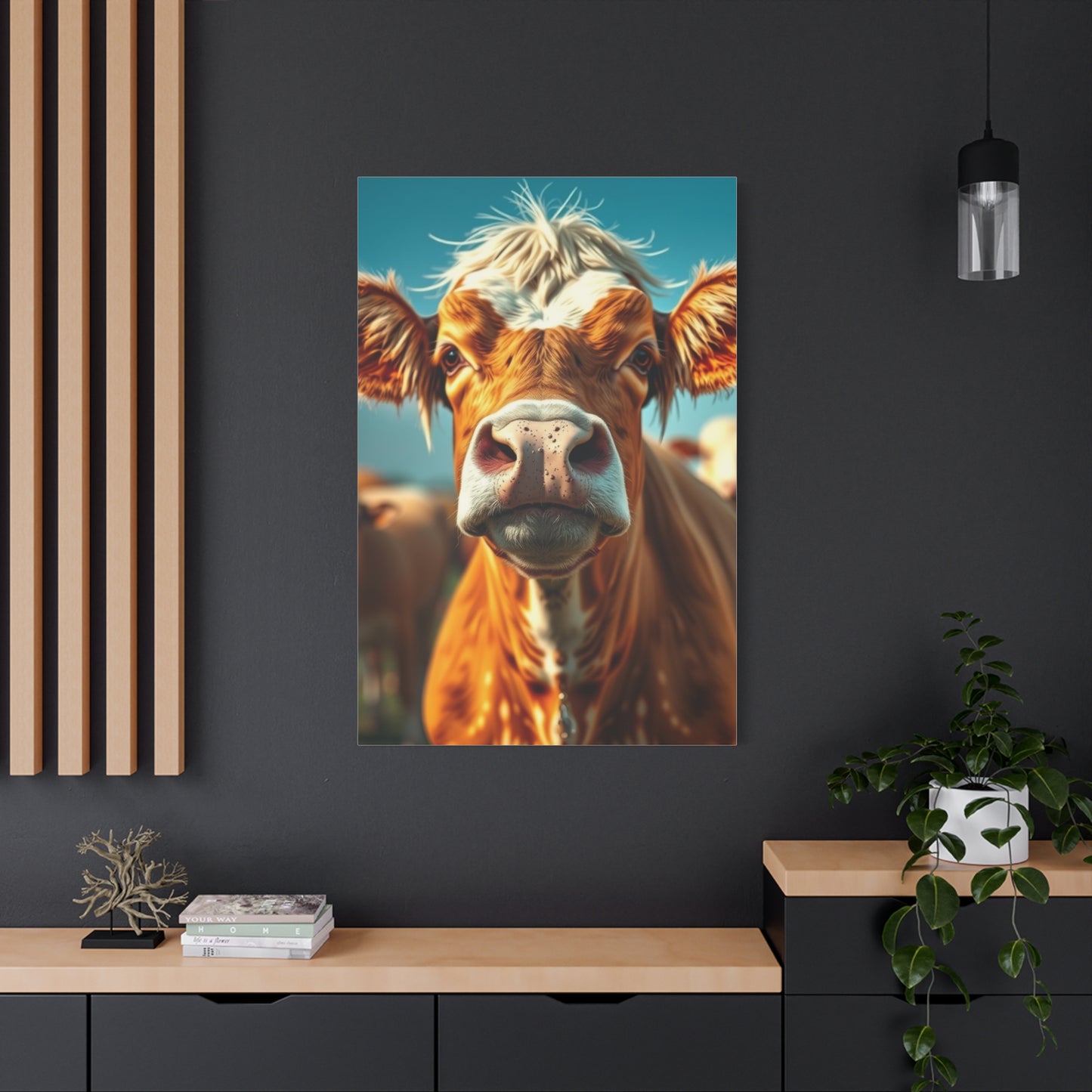Serene Countryside: Every Detail Reflects the Essence of Rural Reverie Masterpieces
The allure of pastoral landscapes has captivated hearts for centuries, bringing the tranquility of open fields, rolling hills, and quiet farmsteads into living environments. These artistic representations offer more than mere decoration; they serve as windows into a simpler way of life, evoking memories of unhurried days and the gentle rhythm of agricultural traditions. The timeless appeal of countryside imagery continues to resonate with those seeking to create sanctioned environments that celebrate natural beauty and peaceful living.
Serene Countryside Scenes: Eternal Appeal Through the Ages
Countryside imagery has maintained its position as a cherished artistic subject throughout history. The depiction of farmlands, meadows, and rustic dwellings speaks to something fundamental in human nature—a connection to the earth and appreciation for agricultural heritage. These scenes capture moments frozen in time, where the simplicity of daily life unfolds against backdrops of natural splendor.
The enduring popularity of pastoral artwork stems from its ability to transport viewers to places of peace and reflection. Whether showcasing golden wheat fields swaying in summer breezes, stone cottages nestled among ancient trees, or winding paths leading through verdant valleys, these images offer visual respite from modern complexity. The compositions often feature harmonious arrangements of natural elements, architectural features, and atmospheric conditions that work together to create compelling narratives.
Artists who specialize in countryside scenes possess a unique talent for capturing the essence of agricultural life. They observe how morning mist settles over pastures, how afternoon light filters through orchard branches, and how twilight transforms familiar landscapes into magical realms. Through careful attention to detail and masterful technique, they translate these observations into works that resonate with viewers on emotional and aesthetic levels.
The appeal extends beyond those with direct agricultural experience. Urban dwellers particularly appreciate these artistic pieces, as they provide tangible connections to natural environments and slower rhythms of existence. The imagery serves as a reminder of seasonal cycles, the dignity of manual labor, and the beauty inherent in sustainable living practices that have sustained communities for generations.
Collectors value countryside artwork for its versatility and universal appeal. These pieces complement various decorating approaches, from traditional farmhouse aesthetics to contemporary minimalist schemes. The neutral color palettes typical of pastoral scenes ensure they integrate seamlessly with existing furnishings while adding depth and character to any setting. Their presence creates focal points that invite contemplation and conversation.
Natural Beauty Celebrated Through Countryside Artistic Expressions
The celebration of natural beauty forms the cornerstone of countryside artistic traditions. These works document the magnificent diversity of agricultural landscapes, from expansive plains to terraced hillsides, from orchards heavy with fruit to vineyards stretching toward distant horizons. Each composition tells a story about the relationship between land and those who tend it.
Artists approach countryside subjects with reverence and attention to detail. They study how different seasons transform familiar scenes, noting the subtle shifts in vegetation, light quality, and atmospheric conditions. Spring paintings might feature blossoming trees and fresh green growth, while autumn works showcase harvest abundance with rich golden and amber tones. Winter scenes capture the stark beauty of dormant fields and bare branches against cloudy skies, while summer compositions celebrate lush growth and abundant harvests.
The technical execution of countryside artwork demands considerable skill. Painters must understand perspective to convincingly render distant horizons and rolling terrain. They master color theory to capture the countless variations of green found in meadows and forests, the warm tones of ripened grain, and the cool blues of distant mountains. Brushwork techniques allow them to suggest texture in weathered wood, rough stone walls, and feathery foliage.
Beyond technical proficiency, successful countryside artists possess emotional intelligence that allows them to infuse their work with feeling. They recognize that these scenes represent more than geographic locations—they embody values, memories, and aspirations. A painting of a family farm might evoke nostalgia for simpler times, while a pristine meadow scene might inspire thoughts about environmental stewardship and conservation.
The documentation of agricultural landscapes serves an important cultural function. As traditional farming practices evolve and rural areas undergo development pressures, artistic representations preserve visual records of disappearing ways of life. These works become historical documents that future generations will study to understand how their ancestors lived, worked, and shaped the land.
Contemporary artists continue to find fresh approaches to traditional countryside subjects. Some incorporate modern elements that acknowledge current agricultural realities, while others idealize pastoral settings to emphasize their role as retreats from contemporary pressures. Both approaches have validity and appeal to different audiences seeking connections with rural heritage.
Printed Countryside Scenes for Creating Welcoming Atmospheres
High-quality reproductions of countryside artwork have democratized access to these beloved images. Advanced printing technologies now capture the subtle color variations, textural details, and atmospheric qualities that make original paintings so compelling. These reproductions allow broader audiences to enjoy pastoral scenes without the expense associated with acquiring original artworks.
The production of quality prints involves sophisticated processes that begin with high-resolution digital captures of original paintings. Color specialists work meticulously to ensure the reproductions faithfully represent the artist's intentions, matching hues, values, and saturation levels with precision. The selection of appropriate papers or canvas materials significantly impacts the final appearance, with different substrates lending distinct characteristics to the finished pieces.
Canvas prints have gained particular popularity for countryside imagery. The textured surface mimics the appearance of original paintings, adding dimensional interest that enhances the viewing experience. The material's durability and resistance to environmental factors make it practical for various locations, from busy family gathering areas to quiet personal retreats. Modern canvas printing processes ensure colors remain vibrant and stable over time, maintaining their visual impact for years.
Paper prints offer different advantages for displaying countryside scenes. Fine art papers provide smooth surfaces that render fine details with exceptional clarity. The selection of paper weight, texture, and coating affects how the image appears, with options ranging from matte finishes that minimize glare to glossy surfaces that enhance color intensity. Archival quality papers and inks ensure longevity, protecting investments in these decorative pieces.
The availability of various sizes accommodates different display contexts. Small prints suit intimate locations such as reading nooks or powder rooms, where they create personal moments of visual interest. Medium-sized pieces work well in dining areas, bedrooms, and home offices, providing substantial focal points without overwhelming surrounding elements. Large-scale reproductions make dramatic statements in living areas, entryways, or commercial establishments where they establish atmosphere and character.
Printed countryside scenes offer flexibility that supports evolving aesthetic preferences. Unlike permanent architectural features, these pieces can be easily changed or relocated as tastes develop or circumstances change. This adaptability encourages experimentation with different compositions, color palettes, and styles, allowing individuals to curate personalized collections that reflect their unique sensibilities and experiences.
Refined Simplicity in Countryside Canvas Presentations
The concept of elegant simplicity characterizes many successful countryside artistic presentations. Rather than relying on elaborate frames or complicated displays, these pieces often shine when presented with restraint that allows the imagery itself to command attention. This approach aligns with contemporary design philosophies that value clarity, authenticity, and connection to natural materials.
Canvas presentations particularly embody this aesthetic. The material's organic nature complements countryside subject matter, creating harmonious relationships between content and presentation format. Gallery-wrapped canvases, where the image extends around the edges of the stretcher bars, eliminate the need for frames entirely. This streamlined presentation emphasizes the artwork while minimizing visual distractions.
The choice of whether to frame countryside canvases depends on personal preference and display context. Unframed pieces suit casual, relaxed environments where they contribute to comfortable, approachable atmospheres. The exposed canvas edges add tactile interest and emphasize the handcrafted quality of the presentation. For more formal settings, simple frames in natural wood tones or neutral finishes enhance the artwork without competing with it.
Color selection plays a crucial role in achieving elegant simplicity. Countryside scenes typically feature muted, naturalistic palettes that evoke specific moods and seasons. Soft greens, warm earth tones, gentle blues, and golden harvest colors create soothing visual experiences that complement rather than dominate their surroundings. These subdued color schemes ensure the artwork integrates gracefully with varied decorating approaches.
Compositional elements contribute to the impression of refined simplicity. Successful countryside images often employ balanced arrangements that guide the viewer's eye through the scene without creating visual confusion. Clear focal points, whether a prominent tree, distinctive building, or compelling sky formation, anchor compositions while supporting details provide context and interest. Negative spaces within paintings allow visual breathing room that enhances overall impact.
The concept of elegant simplicity extends to how multiple pieces are displayed together. Cohesive collections might feature variations on similar themes—different seasons in the same location, various agricultural activities, or studies of particular architectural features. Consistent presentation formats and complementary color palettes create unified displays that feel intentional rather than haphazard.
Tranquil Atmospheres Achieved Through Countryside Paintings
The psychological impact of countryside paintings extends beyond aesthetic pleasure to influence mood and emotional wellbeing. These artistic works possess inherent qualities that promote relaxation, reduce stress, and create environments conducive to contemplation and rejuvenation. Understanding these effects helps explain why pastoral imagery remains so consistently popular across cultures and generations.
Color psychology plays a significant role in how countryside paintings affect viewers. The predominant greens found in meadow and forest scenes have documented calming effects, reducing anxiety and promoting feelings of balance and renewal. Warm earth tones present in plowed fields and autumn landscapes create sensations of comfort and security. Blue tones in skies and distant mountains evoke serenity and expansiveness. These color influences work subtly but powerfully to shape emotional responses.
The subject matter itself carries psychological resonance. Countryside scenes represent places where natural rhythms prevail over artificial schedules, where growth follows seasonal patterns rather than human demands. Viewing these images provides mental respite, offering brief escapes from the pressures and pace of contemporary life. The brain responds to these visual cues by initiating relaxation responses similar to those experienced in actual natural settings.
Compositional elements within countryside paintings contribute to their calming effects. Horizontal lines present in fields, fences, and horizons create stability and peace. Gentle curves in paths, streams, and rolling hills guide the eye smoothly through compositions without jarring interruptions. The absence of harsh contrasts or aggressive elements allows viewers to engage with the imagery at their own pace, discovering details through leisurely observation rather than confronting overwhelming visual information.
The contemplative quality of countryside paintings makes them particularly suitable for locations designated for rest and renewal. Bedrooms benefit from these soothing images, which support the transition from active daily life to restful sleep. Reading areas and personal libraries become more inviting when adorned with pastoral scenes that complement the reflective nature of these activities. Meditation areas and wellness facilities utilize countryside imagery to enhance environments designed for mental and physical restoration.
Healthcare settings increasingly recognize the therapeutic value of countryside artwork. Research indicates that exposure to natural imagery, including pastoral paintings, can reduce patient anxiety, lower blood pressure, and even decrease perceived pain levels. These findings have led to more thoughtful curation of artwork in medical facilities, with countryside scenes featuring prominently in treatment areas, waiting rooms, and recovery suites.
Countryside Artwork for Daily Motivation and Reflection
Beyond their decorative and psychological functions, countryside paintings serve as sources of inspiration that enrich daily life. These images embody values and ideals that resonate with those seeking meaning, purpose, and connection in their existence. Engaging regularly with pastoral artwork can reinforce positive intentions and provide touchstones for personal growth and self-reflection.
The themes present in countryside imagery often align with aspirational values. Scenes depicting careful stewardship of agricultural land inspire thoughts about sustainability and environmental responsibility. Images showing traditional farming practices remind viewers of time-tested wisdom and the value of patience in achieving worthwhile goals. Paintings of well-maintained homesteads and cultivated gardens celebrate the dignity of physical labor and the satisfaction of creating beauty through sustained effort.
Seasonal variations in countryside artwork provide frameworks for reflecting on personal cycles of growth, harvest, rest, and renewal. Spring scenes depicting emergence and new beginnings might inspire fresh starts or renewed commitments to goals. Summer paintings showing abundance and vitality can energize ambitions and celebrate achievements. Autumn works highlighting harvest and preparation encourage gratitude and planning. Winter imagery emphasizing rest and dormancy validates the need for recovery periods and thoughtful contemplation.
The presence of countryside paintings in work environments can influence professional attitudes and approaches. Home offices adorned with pastoral scenes may foster more balanced perspectives on productivity, reminding occupants that sustainable achievement requires rhythm rather than relentless pushing. The natural world depicted in these paintings operates according to cycles of effort and rest, growth and consolidation—patterns that have much to teach about effective professional practice.
Educational settings benefit from countryside artwork that sparks curiosity about agricultural heritage, environmental science, and cultural history. These images generate discussion topics spanning multiple disciplines, from biology and geography to art history and social studies. Students exposed to pastoral imagery develop appreciation for food production systems, land management practices, and the complex relationships between human communities and natural environments.
Families use countryside paintings as conversation starters and teaching tools. Parents share memories of rural experiences, grandparents describe agricultural practices from their youth, and children ask questions about animals, crops, and seasonal activities depicted in the artwork. These intergenerational exchanges strengthen family bonds while transmitting cultural knowledge and values across generations.
Refreshing Walls with Countryside Artistic Selections
The strategic use of countryside artwork provides effective methods for revitalizing living environments without undertaking extensive renovations. These pieces introduce color, texture, and narrative interest that transform ordinary walls into engaging features. Understanding how to select and position pastoral imagery maximizes its impact while ensuring harmonious integration with existing elements.
Assessment of existing conditions guides effective artwork selection. Wall color influences how paintings appear, with neutral backgrounds providing versatile canvases that allow artwork to shine. Darker walls can accommodate bold, brightly colored pieces that might overwhelm lighter settings, while pale walls benefit from paintings with sufficient contrast to prevent them from visually disappearing. The amount of natural and artificial lighting affects color perception, with well-lit areas revealing subtle details that dimmer locations might obscure.
Architectural features within rooms influence optimal artwork placement. Fireplaces, built-in shelving, and window arrangements create natural focal points that can be enhanced or balanced with thoughtfully positioned paintings. Countryside artwork placed above mantels establishes strong visual anchors in gathering areas, while pieces flanking windows draw attention to exterior views and connections with actual landscapes. Artwork positioned opposite room entries creates welcoming impressions that set atmospheric tones.
The scale relationship between artwork and furniture requires consideration. Paintings displayed above sofas, beds, or console tables should relate proportionally to these elements, typically spanning two-thirds to three-quarters of the furniture width. This sizing creates visual balance without appearing either overwhelmed by surrounding pieces or awkwardly floating with insufficient visual support. Larger wall expanses can accommodate multiple related pieces arranged in cohesive groupings.
Color coordination between countryside paintings and existing elements strengthens overall design coherence. Artwork featuring dominant green tones harmonizes with natural wood furnishings and organic textiles. Pieces emphasizing warm harvest colors complement similar tones in upholstery, rugs, and decorative accessories. The goal involves creating visual conversations between artwork and surroundings rather than exact matching, which can appear overly coordinated and lack spontaneity.
Rotation of countryside artwork introduces variety and maintains visual freshness. Maintaining collections that can be interchanged seasonally or according to mood preferences prevents visual fatigue and allows experimentation with different aesthetic directions. This practice also enables protective storage of pieces during periods when they're not displayed, potentially extending their lifespan by reducing continuous exposure to light and environmental factors.
Traditional Countryside Scenes in Masterful Artistic Works
The category of masterful countryside artwork encompasses exceptional pieces that transcend mere decoration to achieve significance as cultural artifacts and artistic achievements. These works demonstrate superior technical execution, emotional depth, and timeless appeal that ensures their relevance across generations. Understanding what distinguishes masterpieces from ordinary countryside paintings enriches appreciation and informs collecting decisions.
Compositional mastery characterizes exceptional countryside artwork. The most accomplished pieces employ sophisticated spatial arrangements that guide viewers through scenes while maintaining overall unity. These compositions balance foreground interest with compelling middle ground elements and atmospheric distance. The relationships between components feel inevitable rather than arbitrary, as though the scene could exist in no other configuration.
Technical virtuosity separates masterful works from competent but unremarkable pieces. Superior paintings display confident brushwork that suggests forms and textures with economy of means. Color relationships demonstrate understanding of atmospheric perspective, where distant elements appear cooler and less distinct than foreground features. Light effects reveal study of how illumination transforms landscapes at different times and under various conditions. These technical achievements serve artistic vision rather than existing as mere displays of skill.
Emotional authenticity distinguishes truly memorable countryside artwork. The most powerful pieces convey genuine feeling rather than sentimental manipulation. They capture specific qualities of place and moment—the particular character of afternoon light on harvested fields, the weight of humid air before summer storms, the crisp clarity of autumn mornings. Viewers respond to this authenticity, recognizing truth in artistic interpretation even when they haven't personally experienced the depicted locations.
Historical significance adds dimension to certain countryside masterpieces. Works created during pivotal cultural moments document changing relationships between societies and agricultural landscapes. Paintings from periods of rapid industrialization capture rural ways of life threatened by modernization. More recent works might address environmental concerns or celebrate sustainable agricultural practices. This documentary function enhances artistic merit, making the pieces valuable as historical records as well as aesthetic objects.
The influence of masterful countryside paintings extends beyond their individual merit to shape broader artistic movements and popular taste. Iconic works establish visual vocabularies that subsequent artists reference, reinterpret, or react against. They set standards for technical achievement and conceptual depth that challenge practitioners to elevate their work. Reproductions of these masterpieces introduce wide audiences to artistic excellence, potentially inspiring deeper engagement with visual arts.
Collecting considerations for masterful countryside artwork involve different criteria than casual decorating purchases. Serious collectors research artists' backgrounds, exhibition histories, and critical reception. They consider factors such as medium, condition, provenance, and rarity. Investment potential may influence decisions, though the most satisfying collections reflect personal passion rather than purely financial calculations. Building relationships with reputable galleries and dealers provides access to significant pieces and expert guidance.
Countryside Artwork: Gentle Tones and Inviting Qualities
The predominance of soft color palettes in countryside artwork contributes significantly to its widespread appeal and versatility. These gentle tones create inviting atmospheres that welcome rather than overwhelm, soothe rather than stimulate. Understanding the specific qualities of these color schemes and their effects helps in selecting pieces that achieve desired aesthetic and emotional outcomes.
The greens present in pastoral imagery span remarkable ranges of hue, value, and intensity. Spring meadows glow with yellow-greens suggesting new growth and vitality. Summer landscapes display richer, deeper greens indicating mature foliage and abundant vegetation. Autumn fields transition to olive and sage tones as plants prepare for dormancy. These variations provide subtle interest while maintaining overall color harmony that reads as peaceful and natural.
Earth tones form another essential component of countryside color palettes. Warm browns, russets, and umbers suggest plowed soil, weathered wood, and tree bark. These grounding colors provide stability and connection to terrestrial materials that have anchored human existence throughout history. Combined with greens, they create balanced schemes that feel complete and satisfying without requiring additional hues.
Sky tones contribute atmospheric qualities to countryside paintings. Pale blues suggest clear weather and open horizons, expanding the sense of available atmosphere. Warmer tones in skies—peaches, pinks, lavenders—indicate transitional times of day when light takes on special qualities. Gray skies add drama and suggest moisture-laden air or approaching weather changes. These atmospheric elements profoundly influence the mood and character of pastoral scenes.
The warmth infused into countryside artwork extends beyond literal color temperatures to encompass emotional qualities. Even paintings depicting winter scenes or overcast conditions typically maintain inviting characteristics through careful color selection and compositional choices. The overall impression remains welcoming rather than forbidding, suggesting shelter, sustenance, and human presence within natural settings.
Tonal relationships within countryside paintings demonstrate sophisticated understanding of color harmony. Artists working in this genre typically employ analogous color schemes featuring adjacent hues on the color wheel, creating naturally cohesive palettes. Complementary accents—a spot of orange sunlight in predominantly green compositions, a blue shadow within warm harvest scenes—provide visual interest without disrupting overall unity.
The subdued intensity of colors in quality countryside artwork ensures longevity of appeal. Highly saturated, intense hues can fatigue viewers over time or limit versatility in placement. The gentler colors typical of pastoral scenes maintain visual interest through subtle variations and complex mixing rather than pure, unmixed pigments. This approach yields sophisticated results that reward extended viewing and reveal new qualities upon repeated exposure.
Maintenance Guidelines for Countryside Canvas Pieces
Proper care of countryside canvas artwork ensures these pieces maintain their beauty and structural integrity over time. While canvas prints prove generally durable and low-maintenance, certain practices protect investments and preserve appearance. Understanding appropriate cleaning methods, display considerations, and storage techniques extends the lifespan of cherished pastoral images.
Regular dusting prevents accumulation of particles that can dull appearance and potentially damage canvas surfaces. Soft, clean microfiber cloths work well for gentle surface cleaning, using light pressure to avoid disturbing the printed image. Dusting should proceed in consistent directions rather than circular motions that might redistribute rather than remove particles. For textured canvases, soft brush attachments on vacuum cleaners set to low suction can effectively remove dust from crevices.
Spot cleaning addresses isolated marks or soiling without subjecting entire pieces to unnecessary moisture exposure. Slightly dampened cloths can carefully remove specific spots, working from the outer edges of marks toward centers to prevent spreading. Only minimal moisture should be used, as excessive dampness can damage canvas fibers or affect printed images. Immediate drying with clean, absorbent cloths prevents water spots or tide lines. For persistent marks, consulting professional art restoration services proves wiser than aggressive amateur attempts that might cause permanent damage.
Display location significantly impacts canvas longevity. Direct sunlight causes fading and can weaken canvas fibers over time. Positioning artwork away from windows or using window treatments to filter strong light protects these pieces. If sunlight exposure proves unavoidable, UV-filtering glazing or coatings provide additional protection. Artificial lighting should avoid focusing intense heat-producing bulbs directly on canvases, as accumulated heat accelerates deterioration.
Humidity and temperature fluctuations affect canvas stability. Extreme dryness can make canvas brittle, while excessive moisture promotes mold growth and can cause canvas sagging. Maintaining moderate, stable environmental conditions protects artwork. Avoiding placement near heating vents, air conditioning units, or in damp basements helps ensure appropriate conditions. In particularly humid climates, dehumidifiers maintain suitable atmospheric moisture levels.
Proper handling prevents accidental damage to countryside canvases. Always grasp pieces by frames or stretcher bars rather than touching printed surfaces, as oils from skin can leave marks. When moving artwork, protect corners and edges, which are particularly vulnerable to impact damage. For storage or transport, wrapping pieces in acid-free paper followed by bubble wrap provides cushioning while preventing surface abrasion.
Storage conditions for countryside canvases not currently displayed require attention to prevent damage during these periods. Pieces should be stored in climate-controlled environments with moderate temperature and humidity levels. Storing canvases flat with protective layers between stacked pieces prevents surface contact that might cause transfer or impressions. For long-term storage, covering wrapped pieces with breathable fabric prevents dust accumulation while allowing air circulation that discourages mold growth.
Countryside Imagery in Compact Wall Presentations
The adaptation of countryside artwork to smaller display formats extends the accessibility and versatility of pastoral imagery. Compact presentations suit locations where larger pieces would overwhelm or where collections of multiple smaller works create more interesting visual arrangements than single large paintings. Understanding effective approaches to displaying diminutive countryside scenes maximizes their impact despite reduced scale.
Selection of subjects particularly suited to small formats emphasizes intimate vignettes rather than expansive vistas. Close-up studies of specific elements—a weathered gate, blooming wildflowers, grazing animals—work effectively in compact sizes, allowing viewers to appreciate details that might be lost in broader compositions. These focused subjects create opportunities for serial collections exploring variations on particular themes or subjects.
Gallery walls featuring multiple small countryside pieces create dynamic displays with considerable visual interest. Arrangements might follow formal grids for orderly, structured appearances, or organic configurations that feel more spontaneous and collected over time. Maintaining consistent framing or matting unifies disparate images, while varying these elements can add complexity and depth to displays. Color coordination between pieces strengthens overall coherence.
Strategic placement of small countryside artwork leverages locations that cannot accommodate larger pieces. Narrow wall segments between windows or doors become viable display locations for compact paintings. Bathroom walls, often overlooked in decorating schemes, gain character and polish through small pastoral scenes. Kitchen areas benefit from diminutive countryside images that add visual interest without interfering with functional requirements of these working environments.
Grouping small pieces by theme creates focused collections that develop specific narrative or aesthetic directions. A series depicting seasonal progression through countryside landscapes tells visual stories that engage viewers over time. Collections focusing on particular agricultural activities—planting, tending, harvesting—celebrate the cycles of cultivation. Architectural studies of farmhouses, barns, and outbuildings document vernacular building traditions.
Layering techniques add dimension to displays of small countryside artwork. Placing pieces on shelving or mantels allows for combination with three-dimensional objects such as pottery, natural materials, or vintage farm implements. This integration of two and three-dimensional elements creates rich, textured displays that engage multiple senses and support varied decorating styles.
The portability of small countryside pieces encourages frequent rearrangement and experimentation. These movable elements allow ongoing adjustment of displays as aesthetic preferences evolve or seasonal changes inspire fresh approaches. The relatively modest investment required for small-format pieces enables building diverse collections that provide options for creating different moods or addressing varied locations throughout living environments.
Pastoral Themes in Countryside Artistic Traditions
The celebration of agricultural life and pastoral traditions forms the thematic heart of countryside artwork. These themes resonate across cultures and historical periods, speaking to fundamental human experiences and values. Understanding the specific motifs and their significance enriches appreciation for how artists translate countryside life into compelling visual narratives.
Agricultural labor features prominently in pastoral artwork, honoring the skill and dedication required to cultivate land and raise livestock. Paintings depicting plowing, planting, tending, and harvesting celebrate the rhythmic cycles of cultivation while acknowledging the physical demands of farm work. These images recognize farming not merely as economic activity but as a way of life that shapes character and community.
Architectural elements in countryside scenes document vernacular building traditions that evolved in response to local materials, climate conditions, and functional requirements. Farmhouses, barns, sheds, and fences demonstrate practical problem-solving and aesthetic sensibilities developed over generations. The weathering and patina on these structures tell stories of endurance and adaptation, becoming visual metaphors for resilience and continuity.
Animal husbandry appears frequently in pastoral artwork, reflecting the central role of livestock in agricultural economies and rural life. Cattle grazing in meadows, sheep on hillsides, and horses pulling equipment represent not just agricultural resources but relationships between humans and animals built on mutual dependence. These images often convey affection and respect for creatures that contribute to human sustenance and prosperity.
Gardens and orchards combine productive and ornamental functions in countryside scenes. These cultivated areas demonstrate human capacity to enhance nature while working within its parameters. The careful arrangement of vegetables, flowers, fruit trees, and berry bushes creates beauty alongside functionality, embodying ideals of abundance, order, and wise stewardship.
Seasonal celebrations and communal activities depicted in countryside artwork emphasize social dimensions of agricultural life. Images of harvest festivals, farmers markets, and community gatherings illustrate how agricultural calendars structure social interactions and collective identity. These themes remind viewers that farming traditionally occurred within networks of mutual support and shared cultural practices.
The intersection of natural and cultivated landscapes in pastoral scenes explores relationships between human activity and environmental systems. Fields carved from forests, orchards planted on hillsides, and pastures bordered by hedgerows show how agricultural practices shape landforms while depending on natural processes. This theme gains particular relevance in contemporary discussions about sustainable land use and environmental conservation.
Illumination and Shadow in Countryside Paintings
The masterful handling of light and shadow distinguishes exceptional countryside artwork, contributing dramatically to mood, depth, and visual interest. Artists working with pastoral subjects must understand how illumination interacts with landscape features, atmospheric conditions, and time of day to create convincing and evocative images. Appreciation of these elements enhances understanding of artistic achievement and selection of pieces that demonstrate technical excellence.
Directional lighting creates sculptural qualities in landscape paintings, revealing forms through patterns of illumination and shadow. Morning light, arriving from low angles, casts long shadows that emphasize textural details and surface variations. Afternoon sun from higher positions creates shorter shadows with sharper edges, modeling forms with clarity. Evening light reverses morning shadow patterns while introducing warmer color temperatures that transform landscapes into golden realms.
Atmospheric perspective relies on light behavior to create convincing depth in countryside paintings. Distant features appear progressively lighter, cooler, and less distinct than foreground elements as atmospheric particles scatter light. This optical phenomenon allows artists to suggest vast distances and multiple spatial planes without relying solely on linear perspective. The gradual transition from sharp foreground details to hazy distant features guides viewers' eyes through compositions while establishing spatial relationships.
Cloud formations interact with sunlight to create dramatic lighting effects that energize countryside scenes. Breaks in cloud cover allow shafts of light to illuminate specific landscape features while leaving surrounding areas in relative shadow. These spotlighting effects create focal points and emotional emphasis, suggesting divine presence or nature's drama. Overcast conditions produce even, diffused lighting that reveals subtle color variations and reduces harsh contrasts.
Reflected light adds complexity and realism to sophisticated countryside paintings. Light bouncing from pale surfaces illuminates adjacent shadow areas with tinted illumination. Sky colors reflect in water features, connecting terrestrial and atmospheric elements. These secondary light sources prevent shadows from appearing as flat, lifeless voids, instead revealing color and form even in areas receiving no direct illumination.
Backlighting creates silhouettes and haloes that add mystery and drama to countryside scenes. Placing light sources behind subjects produces rim lighting that defines edges while leaving frontal surfaces in shadow. This approach works particularly effectively for depicting trees, buildings, and figures at dawn or dusk, creating striking contrasts and memorable images that emphasize form over detail.
The quality of light varies with seasons, affecting the character of countryside paintings. Summer light appears neutral and bright, revealing details with clarity. Autumn illumination takes on golden qualities as the sun's angle decreases, warming landscapes with amber tones. Winter light appears cooler and often harsher, creating stark contrasts between snow and shadows. Spring lighting gains freshness from atmospheric clarity following winter's passage. Sensitive artists capture these seasonal light qualities, enhancing the temporal specificity of their work.
Countryside Reproductions as Meaningful Presents
The practice of giving countryside artwork as gifts acknowledges the universal appeal of pastoral imagery while allowing personalization through thoughtful selection. These presents suit various occasions and recipients, conveying messages of warmth, thoughtfulness, and appreciation. Understanding what makes particular pieces appropriate for specific circumstances and individuals ensures gifts achieve their intended impact.
Housewarming occasions provide ideal opportunities for gifting countryside artwork. New homeowners face the prospect of decorating empty walls, making tasteful paintings welcome practical additions to their environments. Pastoral scenes bring warmth and character to new residences while avoiding overly personal choices that might not align with recipients' preferences. The neutral, nature-based themes of countryside imagery suit varied decorating approaches, ensuring gifts integrate successfully into diverse aesthetic schemes.
Anniversary celebrations recognize enduring relationships, making countryside artwork symbolically appropriate. Scenes depicting established homesteads, mature gardens, or ancient trees metaphorically reference longevity, growth, and deep roots. The peaceful qualities of pastoral imagery reflect hopes for ongoing tranquility and harmony in relationships. Selecting pieces featuring seasons corresponding to anniversary dates adds personal touches that demonstrate thoughtfulness.
Retirement gifts acknowledge transitions from active careers to new life phases emphasizing leisure, reflection, and personal pursuits. Countryside paintings suit these occasions by suggesting peaceful settings for this next chapter. Images emphasizing harvest themes celebrate career accomplishments, while scenes depicting rest and renewal align with retirement's promise of relaxation. These gifts recognize past achievements while anticipating fulfilling future experiences.
Wedding presents incorporating countryside artwork celebrate new beginnings while establishing households. Young couples launching lives together appreciate decorative pieces that help transform houses into homes. Pastoral scenes suggesting fertility, growth, and abundance carry traditional symbolic associations with marriage. The timeless quality of well-chosen countryside paintings ensures these gifts remain relevant as couples' tastes mature and evolve over years.
Holiday gift-giving occasions throughout the year find suitable expression in seasonally appropriate countryside artwork. Winter holiday scenes depicting snow-covered farmsteads and evergreen forests align with seasonal celebrations. Spring paintings featuring blossoming orchards and new lambs correspond to renewal themes. Summer harvest imagery suits mid-year celebrations, while autumn scenes with colorful foliage match fall holidays. This seasonal specificity adds relevance while honoring annual cycles.
Expressions of sympathy and condolence can appropriately include countryside artwork offering comfort through natural imagery. Peaceful pastoral scenes provide gentle focal points for contemplation and remembrance. Images emphasizing cycles of life, seasonal progression, and natural continuity offer consolation without explicit religious references that might not align with recipients' beliefs. The quiet beauty of countryside paintings provides solace without trivializing loss.
Combining Countryside Artwork with Organic Materials
The integration of countryside paintings with natural materials creates harmonious decorating schemes that celebrate organic beauty in multiple dimensions. This approach builds layered environments where various elements reinforce shared aesthetic directions and values. Understanding effective combinations ensures cohesive results that feel intentional rather than haphazard.
Wood furnishings establish natural foundations that complement countryside artwork beautifully. The grain patterns, color variations, and textural qualities of wood echo the organic subjects depicted in pastoral paintings. Reclaimed barn wood, weathered driftwood, or polished hardwood pieces each bring distinct characters that can be matched with appropriate artwork. Rough-hewn pieces suit more rustic countryside scenes, while refined wood furniture pairs well with sophisticated pastoral paintings.
Stone and brick elements introduce earthy textures that resonate with countryside imagery. Exposed brick walls provide distinctive backdrops for pastoral paintings, the warm red tones complementing harvest colors in artwork. Stone fireplace surrounds create natural focal points enhanced by carefully selected countryside pieces. Even smaller stone objects displayed near paintings—river rocks, geodes, or carved stone pieces—strengthen connections between artwork and natural materials.
Botanical elements extend countryside themes into three-dimensional reality. Fresh flowers in arrangements echoing those depicted in paintings blur boundaries between artistic representation and living nature. Potted plants and herbs bring growing things into environments adorned with pastoral artwork. Dried flower arrangements, particularly those featuring grasses and wildflowers common to countryside scenes, create thematic continuity between wall art and decorative accessories.
Natural fiber textiles enhance countryside decorating schemes through texture and organic origins. Linen, cotton, wool, and jute fabrics in upholstery, window treatments, and decorative pillows establish comfortable, approachable environments that countryside artwork complements. Neutral colors in these textiles provide versatile backgrounds that allow pastoral paintings to command visual attention while maintaining overall harmony.
Woven baskets and containers reference agricultural heritage and craft traditions associated with rural life. These functional decorative objects connect to activities and materials depicted in countryside paintings—harvesting, storage, and traditional handicrafts. Arrangements of baskets in various sizes and weaving patterns add textural interest while reinforcing pastoral themes established by wall art.
Pottery and ceramic pieces bring artisanal qualities that resonate with countryside artwork's celebration of traditional craftsmanship. Earthenware in natural tones, handthrown vessels with visible maker's marks, and decorative tiles featuring agricultural motifs all strengthen connections between pastoral paintings and broader decorating themes. These objects suggest reverence for skill, patience, and human creativity working with natural materials.
Countryside Artwork for Contemplative Personal Areas
The designation of specific locations as personal retreats benefits greatly from thoughtful incorporation of countryside artwork. These refuge environments, designed for restoration and reflection, gain depth and character through carefully selected pastoral imagery that supports their intended functions. Understanding the particular qualities that make certain countryside pieces suitable for contemplative use guides effective selection.
The psychological requirements of personal retreat environments emphasize calm, beauty, and removal from daily stressors. Countryside artwork meeting these needs avoids dramatic contrasts, agitated compositions, or unsettling subject matter. Instead, these pieces feature harmonious arrangements, gentle colors, and subject matter suggesting peace and security. The goal involves creating visual environments that facilitate mental quieting rather than stimulation.
Final Thoughts:
The serene countryside has long been a source of inspiration for artists, dreamers, and anyone seeking a connection to simpler, slower-paced living. Rural reverie masterpieces, whether through paintings, photographs, or mixed media, capture the essence of this tranquil life, inviting us to bring a piece of that peace into our own homes. As we conclude this exploration, it’s clear that decorating with countryside-inspired art does more than beautify a space — it infuses it with warmth, nostalgia, and a deep sense of place.
What makes rural reverie masterpieces so compelling is their attention to detail. From the soft rustling of wheat fields to the distant silhouette of a weathered barn, every brushstroke or photographic frame invites the viewer to slow down and appreciate the subtle beauty of country living. These works often highlight the textures, colors, and light unique to rural settings—golden sunsets, lush greenery, and weathered wood—elements that evoke a feeling of calm and timelessness.
Incorporating countryside art into your décor allows you to create an environment that celebrates natural beauty and authenticity. The rural aesthetic often pairs effortlessly with rustic, farmhouse, or even contemporary design themes. Its organic textures and muted color palettes blend well with natural materials like wood, stone, and linen, helping to build a cozy, grounded atmosphere. These masterpieces become more than just wall adornments; they are windows to a lifestyle marked by simplicity and heartfelt connection.
Another important aspect is how countryside artwork can serve as a daily reminder to embrace mindfulness and presence. In our busy, technology-driven world, these serene scenes help cultivate moments of reflection and tranquility. They encourage us to find joy in the small details—the way sunlight filters through trees or the peaceful stillness of an open field. Such artwork can transform a room into a sanctuary where stress melts away and creativity flourishes.
Placement and scale matter just as much here as in any design. A large, sweeping rural landscape can become the focal point of a living room, while smaller, intimate sketches or prints might enhance a hallway or reading nook. Layering countryside art with complementary elements like vintage textiles, pottery, or handmade crafts can further deepen the sense of authenticity and charm.
In the end, rural reverie masterpieces offer more than visual appeal—they invite us to reconnect with the rhythms of nature and the simple joys of life. When chosen with care, they help create spaces that feel both welcoming and inspiring, a true reflection of serene countryside living.

















